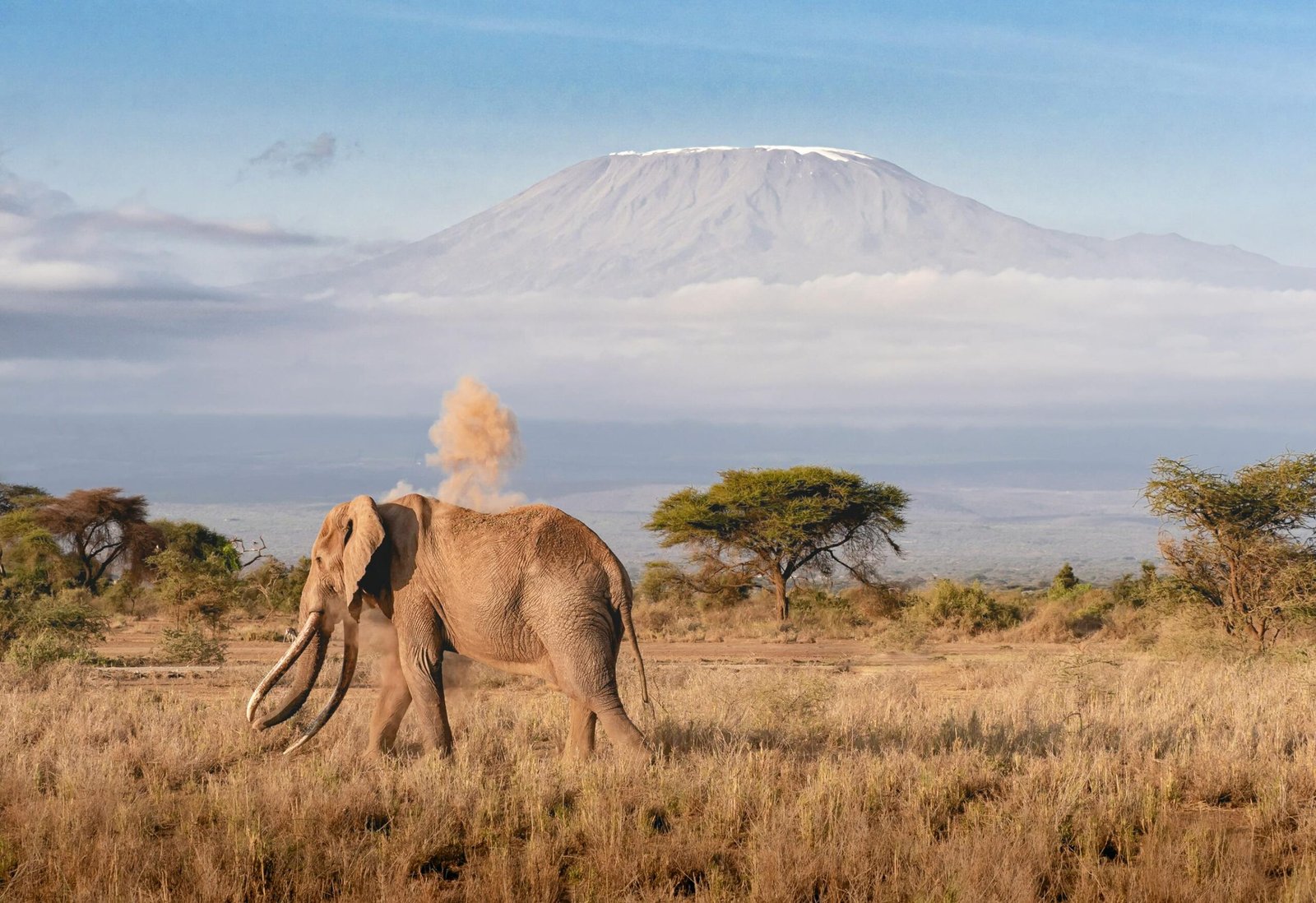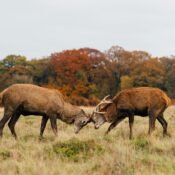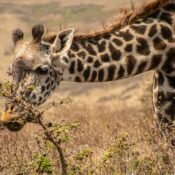
Wildlife Conservation Efforts in Tanzania
Tanzania, located in East Africa, is world-renowned for its rich biodiversity and expansive wildlife habitats. Home to iconic species like elephants, lions, rhinoceroses, and the elusive leopard, the country plays a vital role in global conservation efforts. With 38% of its land area designated as protected, Tanzania is a beacon for environmental preservation. Yet, it also faces significant challenges, ranging from poaching and habitat loss to human-wildlife conflict and climate change.
In this post, we explore the dynamic conservation efforts being carried out in Tanzania, highlighting the key players, strategies, successes, and the challenges that remain in safeguarding the nation’s extraordinary wildlife heritage.
Tanzania’s Natural Wealth
Tanzania’s diverse ecosystems include the Serengeti Plains, the Ngorongoro Crater, the Selous Game Reserve, the miombo woodlands, and the coastal mangroves. The country is part of the Eastern Afromontane biodiversity hotspot and hosts over 430 species of mammals, 1100 bird species, and countless insects, amphibians, and reptiles.
Tourism is a significant part of Tanzania’s economy, with wildlife safaris drawing hundreds of thousands of international visitors annually. The “Big Five” — lion, elephant, buffalo, leopard, and rhino — are a major attraction, and their continued presence depends on effective conservation.
National Parks and Protected Areas
Tanzania has established a robust network of protected areas. The Tanzania National Parks Authority (TANAPA) oversees 22 national parks, which include:
- Serengeti National Park – Famous for the annual wildebeest migration.
- Ngorongoro Conservation Area – A UNESCO World Heritage Site with a unique coexistence of humans and wildlife.
- Ruaha and Katavi National Parks – Less visited but ecologically rich parks supporting large populations of elephants and predators.
- Nyerere National Park – Part of the Selous ecosystem, one of Africa’s largest wilderness areas.
In addition to these parks, Tanzania also has game reserves and Wildlife Management Areas (WMAs), which allow local communities to benefit from tourism and conservation.
Key Conservation Strategies
1. Anti-Poaching Initiatives
Poaching, especially for ivory and rhino horn, has long plagued Tanzania. In response, the government and NGOs have implemented extensive anti-poaching campaigns. High-profile crackdowns, such as Operation Tokomeza, aimed to curb illegal hunting, though not without controversy due to reported human rights abuses.
Organizations like Wildlife Conservation Society (WCS), Frankfurt Zoological Society (FZS), and PAMS Foundation support anti-poaching patrols, ranger training, and intelligence gathering. Technologies like aerial surveillance, GPS tracking, and camera traps are now common tools in the anti-poaching arsenal.
2. Community-Based Conservation
A key shift in Tanzanian conservation has been the empowerment of local communities. Through Wildlife Management Areas (WMAs), villagers are given rights to manage and benefit from wildlife on their land. This creates a financial incentive to protect rather than exploit these resources.
Examples like the Burunge WMA near Tarangire National Park and Makame WMA in the Maasai steppe show that when communities receive a share of tourism revenue and job opportunities, they are more likely to support conservation.
3. Habitat and Corridor Protection
As human populations grow, wildlife corridors that connect protected areas are being degraded. Initiatives to preserve these migration routes are vital. One example is the Tarangire-Manyara corridor, which is essential for elephant movement.
Collaborative efforts among conservation NGOs, government bodies, and private landowners are helping to secure these corridors. Reforestation projects, land-use planning, and community agreements all contribute to maintaining ecological connectivity.
4. Research and Monitoring
Scientific research forms the backbone of many conservation decisions in Tanzania. Long-term ecological studies in the Serengeti have revealed vital insights into predator-prey dynamics, migration patterns, and disease transmission.
Institutions like the Serengeti Wildlife Research Centre and the College of African Wildlife Management (Mweka) help build local capacity in wildlife science. Researchers work closely with park managers to inform conservation strategies.
5. Public Awareness and Education
Changing attitudes is crucial for long-term conservation success. NGOs and government agencies are running education programs to teach schoolchildren, villagers, and tourists about the importance of wildlife.
Campaigns like “Ivory Belongs to Elephants” have raised awareness of poaching’s devastating effects. Radio programs, school visits, and community meetings help build local support and reduce conflict with wildlife.
Role of International Organizations
International funding and partnerships are critical for conservation in Tanzania. Organizations such as the World Wide Fund for Nature (WWF), African Wildlife Foundation (AWF), and USAID have contributed technical expertise, funding, and training.
Projects such as Landscape Conservation in Western Tanzania, supported by USAID, focus on integrating biodiversity conservation with sustainable agriculture and community livelihoods.
In addition, transboundary collaborations like the Kavango Zambezi (KAZA) Transfrontier Conservation Area model offer insights into how regional cooperation can benefit wildlife across borders.
Success Stories
Tanzania has seen some significant conservation wins:
- Elephant numbers have shown signs of stabilization in recent years after a sharp decline between 2009 and 2014.
- The Serengeti ecosystem remains one of the best-preserved savannas in Africa, thanks to consistent management and protection.
- Black rhinos, once nearly extinct in Tanzania, have been reintroduced to the Serengeti and are slowly recovering under strict protection.
- Community-run lodges and eco-tourism ventures have increased in WMAs, providing income and reducing pressure on natural resources.
Ongoing Challenges
Despite progress, several pressing challenges persist:
- Human-Wildlife Conflict: As communities expand into wildlife territory, clashes increase. Crop raiding, livestock predation, and even human fatalities are common.
- Illegal Wildlife Trade: Tanzania remains a transit point for ivory, pangolins, and other trafficked species.
- Climate Change: Altered rainfall patterns and prolonged droughts threaten both wildlife and agricultural livelihoods.
- Funding Gaps: Conservation is expensive. Budget constraints mean that ranger patrols, equipment, and infrastructure often fall short.
- Governance and Corruption: While strides have been made, corruption still undermines enforcement in some areas.
The Road Ahead
The future of Tanzania’s wildlife depends on sustained investment, strong leadership, and collaboration between governments, NGOs, communities, and the private sector. Conservation must be integrated with development, ensuring that people benefit from wildlife and have a stake in protecting it.
Technological innovations like drones, AI-driven monitoring, and blockchain for tracking wildlife products are likely to play a growing role. Likewise, youth engagement and gender inclusion will be essential to foster a new generation of conservation champions.
Tanzania’s natural heritage is not just a national treasure but a global one. The ongoing efforts to preserve its wild places and creatures are not only commendable — they are vital.
Conclusion
Tanzania stands as a symbol of both the beauty and the fragility of the natural world. Through a combination of government action, grassroots involvement, scientific research, and international support, the country has made great strides in conservation. But the work is far from done.
Preserving this biodiversity-rich nation requires vigilance, innovation, and unity. As travelers, conservationists, and global citizens, we all have a role to play in ensuring that Tanzania’s wildlife continues to thrive for generations to come.




